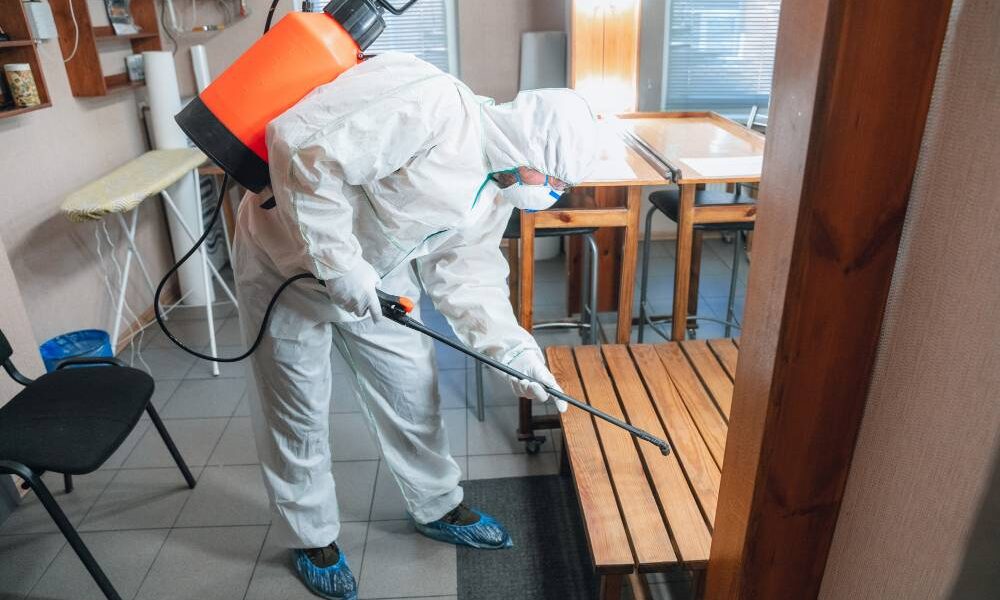Termite infestations can cause significant damage to homes and structures, often going unnoticed until severe harm has already been done. These wood-destroying insects can compromise a building’s integrity, leading to costly repairs and potential safety hazards. Effective pest mitigation methods are crucial in managing and eliminating termite infestations. This article explores the most effective strategies to control termites and protect your property from their destructive behavior.
1. Identification and Inspection
The first step in controlling a termite infestation is accurate identification and thorough inspection. Different termite species, such as subterranean, dry wood, and damp wood termites, require specific treatment methods. Professional pest control in Eau Claire, WI, uses various techniques, including visual inspections, moisture meters, and infrared cameras, to detect termite activity and damage. Identifying the species and extent of the infestation allows for a targeted and effective treatment plan.
2. Chemical Treatments
Chemical treatments, or termiticides, are among the most common and effective methods for controlling termite infestations. There are two primary types of chemical treatments:
a. Liquid Termiticides: These are applied to the soil around a building’s foundation to create a barrier that prevents termites from entering the structure. Non-repellent termiticides are particularly effective because termites cannot detect them and inadvertently carry the poison back to their colony, leading to widespread extermination.
b. Termite Baits: Baiting systems involve placing bait stations around the perimeter of the property. Termites consume the bait, which contains slow-acting insecticides, and carry it back to their colony. This method targets the entire colony, including the queen, and can be highly effective in eliminating the infestation over time.
3. Physical Barriers
Physical barriers are preventive measures designed to deter termites from entering a building. These barriers can be particularly useful in new constructions or during renovations. Some common physical barriers include:
a. Stainless Steel Mesh: Installed around the foundation, this fine mesh prevents termites from penetrating the structure.
b. Sand Barriers: Termites struggle to move through sand particles of a certain size. Installing sand barriers around foundations can help deter subterranean termites.
c. Termite Shields: Metal termite shields are placed on top of foundation walls to prevent termites from gaining access to wooden structures.
4. Biological Control Methods
Biological control methods use natural predators or pathogens to control termite populations. Although still under research and development, these methods show promise as environmentally friendly alternatives to chemical treatments. Some biological control strategies include:
a. Nematodes: Beneficial nematodes are microscopic worms that prey on termites. When applied to the soil, they seek out and infect termites, ultimately killing them.
b. Fungi: Certain fungi, such as Metarhizium anisopliae, are pathogenic to termites. When termites come into contact with these fungi, they become infected and die, reducing the colony’s population.
5. Heat Treatment
Heat treatment is a non-chemical method for controlling dry wood termites. This process involves raising the temperature of the infested area to a level that is lethal to termites, typically around 120-140°F (49-60°C). Heat treatment is effective in penetrating wood and killing termites within the structure. It is often used for localized infestations or as an alternative to fumigation.
6. Integrated Pest Management (IPM)
Integrated Pest Management (IPM) combines multiple control methods to achieve effective and sustainable termite management. This approach emphasizes monitoring, prevention, and the use of targeted treatments to minimize environmental impact. IPM strategies include regular inspections, moisture control, habitat modification, and the judicious use of chemical treatments. By integrating various methods, IPM provides a comprehensive and long-term solution to termite infestations.
Effective termite control requires a multifaceted approach that includes identification, chemical treatments, physical barriers, biological control, heat treatment, and fumigation. Each method has its advantages and is chosen based on the specific termite species, the extent of the infestation, and the property’s unique characteristics. Implementing these strategies in conjunction with Integrated Pest Management (IPM) ensures a thorough and sustainable solution to termite problems. By taking proactive measures and seeking professional pest removal services, homeowners can protect their properties from the significant damage caused by termites.
For the most effective bed bug pest control services in Eau Claire, WI, choose Prompt Action Pest Control. For clarifications and estimates, contact their experts at (877) 877-6678.
